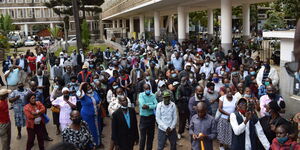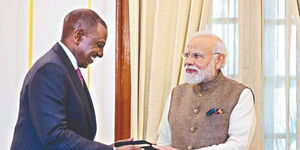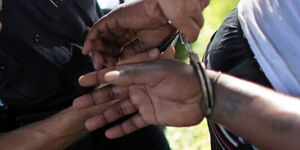Rebecca Lolosoli is one of the women breaking the glass ceiling in the country with their extraordinary achievements.
Lolosoli is a renowned activist behind a little-known village tucked deep in Samburu, Umoja village, where men are totally banned.
She founded the women-only matriarch village in 1991 in collaboration with 16 other women who had survived atrocities under British rule in the country.
The Umoja village has expanded its roots, gaining international recognition and support, based its efforts to accommodate women and girls escaping cultural norms among the Samburu community including child marriage, domestic violence, rape, and Female Genital Mutilation (FGM).
The design and structure of the village where men are not allowed is governed by a set of rules that align with Kenya's Constitution.
Umoja has female leaders and chiefs who ensure that the villagers are protected. There are also social amenities such as markets, schools, and other facilities within the premises.
The women living in the village are extremely frugal and mostly make a decent income that affords them enough money to sustain themselves. On top of that, tourists are allowed to the village at a fee.
Economic activities carried out in the women-only village include making jewelry which they sell and hand over the money to the matriarch who then allocates it to each family. The distribution of money depends on the number of children per house.
Her Inspiration to start the Women only village
Born in 1962 in Wamba village in Samburu, Lolosoli had a normal life as a kid and she loved going to school with the hope of being a nurse.
In 1971, she was on the verge of making history in Kenya when she enrolled at a local college to train as a nurse at the age of nine.
However, her ambition was short-lived after she was compelled to drop out of after six months due to financial constraints.
At the age of 15, Lolosoli was again compelled to undergo mandatory Female Genital Mutilation (FGM). At 18 years, she was forcefully married to a businessman.
As a new bride, she decided to go against the Samburu community culture and ventured into business, something that was outlawed in the community.
She capitalised on that opportunity to enlighten other women on their rights. Her non-conforming personality got her into trouble with men and became a target in the village. She was accused of inciting cultural rebellion among women.
She was attacked several times and her husband showed no concern. That ignited her anger and desire to break the cultural boundaries. That is when she started the Umoja Village.
As of 2015, about 47 women and 200 children lived in Umoja women-only village. These are all survivors of Female Genital Mutilation (FGM), rape, forced marriages, domestic abuse, and widows and orphans.
Today, the women have built a community center and a pre-school for children from the village and neighbouring areas. Other initiatives carried out by the Umoja village include group funds for sickness, disability, and savings. Umoja has extended its initiatives to women and girls from surrounding Samburu villages.
Despite the fact that no man resides in Umoja, the women of Umoja still go outside the community to meet men. Some of the women have admitted that it is impossible for them to live without men. According to them, they still like men and want to have children, even if they remain unmarried afterwards.












